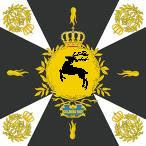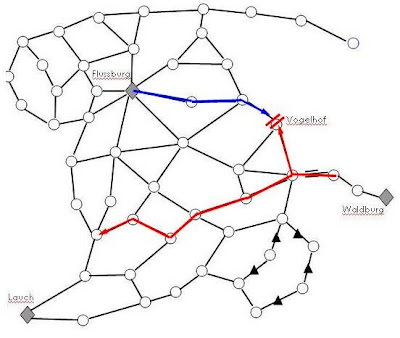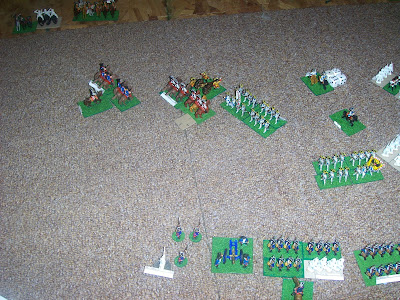M&R Positive Things
- Command inertia - the rules are good (especially if you have recurring characters) for modelling individual commanders and their foibles. They also reflect that an army like the Austrians is slow to move and react, while the Prussians are fast and mobile. Each really does have to be handled differently, to avoid disaster.
- The rules thenselves are extremely slick and professional, full of nice touches such as army lists, campaign rules, pictures, and even little quotes to improve the period flavour. I know this is down to personal taste, but I like the fact that the rules are clearly being backed by somebody who actively enjoys the hobby. And of course, thanks to the internet, this means that you'll have a supporting website with updates, scenarios, etc.
Slick – campaign, lists, etc. - The rules are, at their heart, simple and straightforward. Distances are in basewidths, combat only requires a few dice rolls without consulting tables for results, and (in perhaps the ultimate test,) somebody like me who has been playing DBA games for ages didn't find it a struggle to suddenly handle extra complexity.
- It fundamentally 'works' in terms of playing out realistically. Infantry lines grind against each other, combats ebb and flow, and cavalry battles see-saw backwards and forwards.
M&R Negative Things
- Lots of dice seem to be needed, mostly D6 but also including a D4. I've built up quite a collection over time, but newcomers may find themselves running low.
- Command checks are constantly retaken to see if units become inactive, but rolling 2D6 for each command, each turn, could quickly become wearing in a large battle. The system gets good results, but other games model command breakdowns much more smoothly and with less fuss.
- The flow of play feels strange (perhaps through unfamiliarity at this stage). The usual rhythm of move-fire-combat, move-fire-combat doesn't happen, and is instead fire-move-combat-move-combat, fire move combat, move combat. Firing seems to happen less than combat, which can be frustrating to a 'shooty' army like the Prussians or British. The game uses a variable turn length (which is nice), but is also structured to have pulses within turns, and phases within pulses (or possibly the other way around). I have to use a flow-chart with a marker, just to keep track of who's move it is, and I don't think this'll change with familiarity.
- Organising is required. It's not like DBA, where you think "I'll have a quick battle". You need to roll for sub-commanders, organise commands, and generally put in some time with a bit of paper and a pencil before any clash. Less of an issue once you're set up for a campaign, though.
- Information - units work by strength points, so end up with labels for things like name, unit type, strength points, and possibly also their command in a big game. This means you'd better not want your tabletop covered in miniatures and nothing else - labels, markers, dice-stacks, - they're all appearing.
That's my initial off-the-top-of-the-head thoughts. I'd be interested to hear if anybody else out there has a set of M&R (or some other rules set) they've any thoughts about.
Cheers!
CWT













 The armies deployed, Aschenbach in foreground
The armies deployed, Aschenbach in foreground





















